Menu
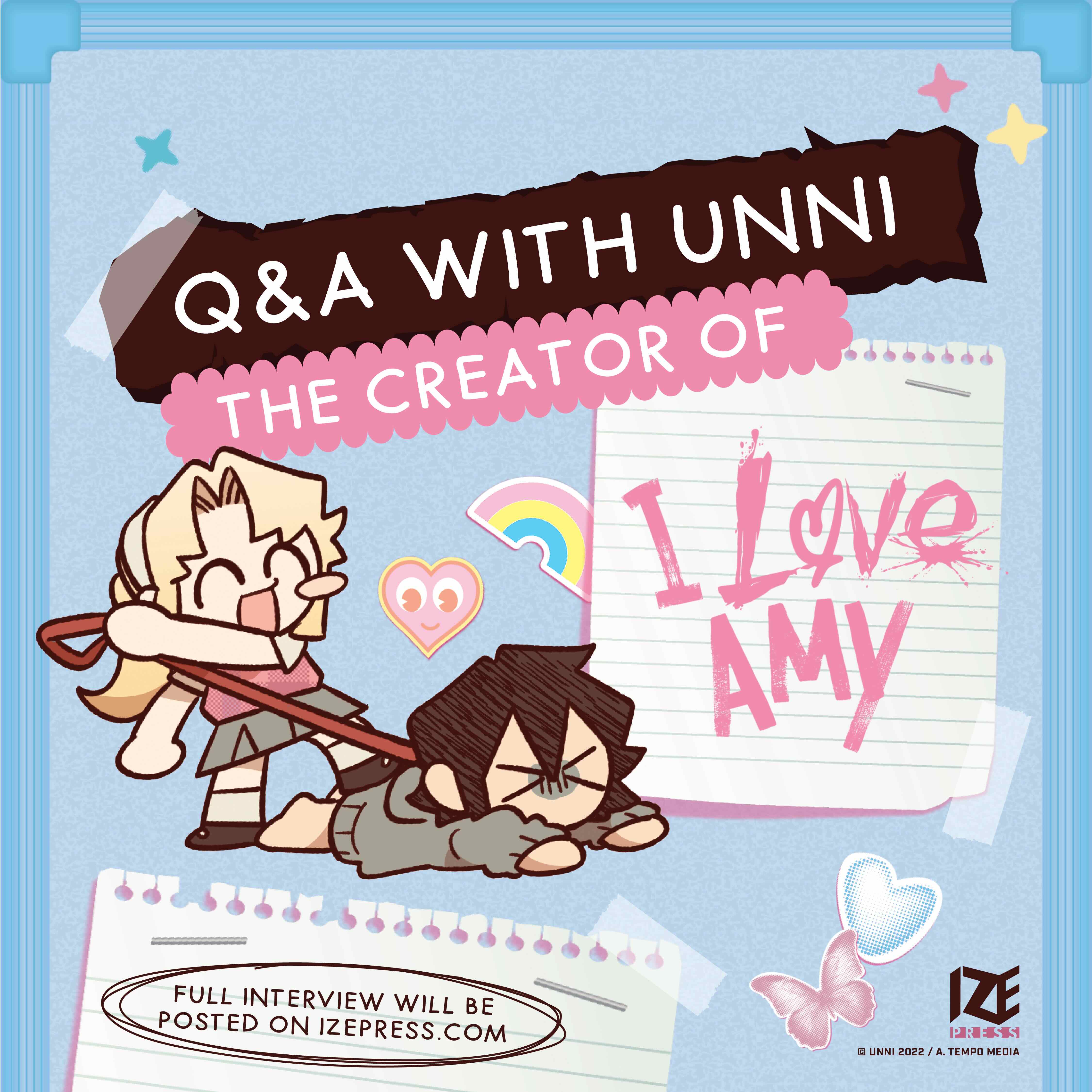
Posted Nov 06, 2025 by Callista Gonzalez
Interview with UNNI, Creator of I Love Amy
When it comes to blending 'cute and wholesome' with 'dark and psychological', few authors do it quite like UNNI, the visionary behind the bingeworthy Girls Love manhwa I Love Amy. I Love Amy is a wild cocktail of comedy, drama, and romance. How did this fever dream begin? Join us as we learn more about UNNI's creative process, inspirations, and more in this exclusive interview!
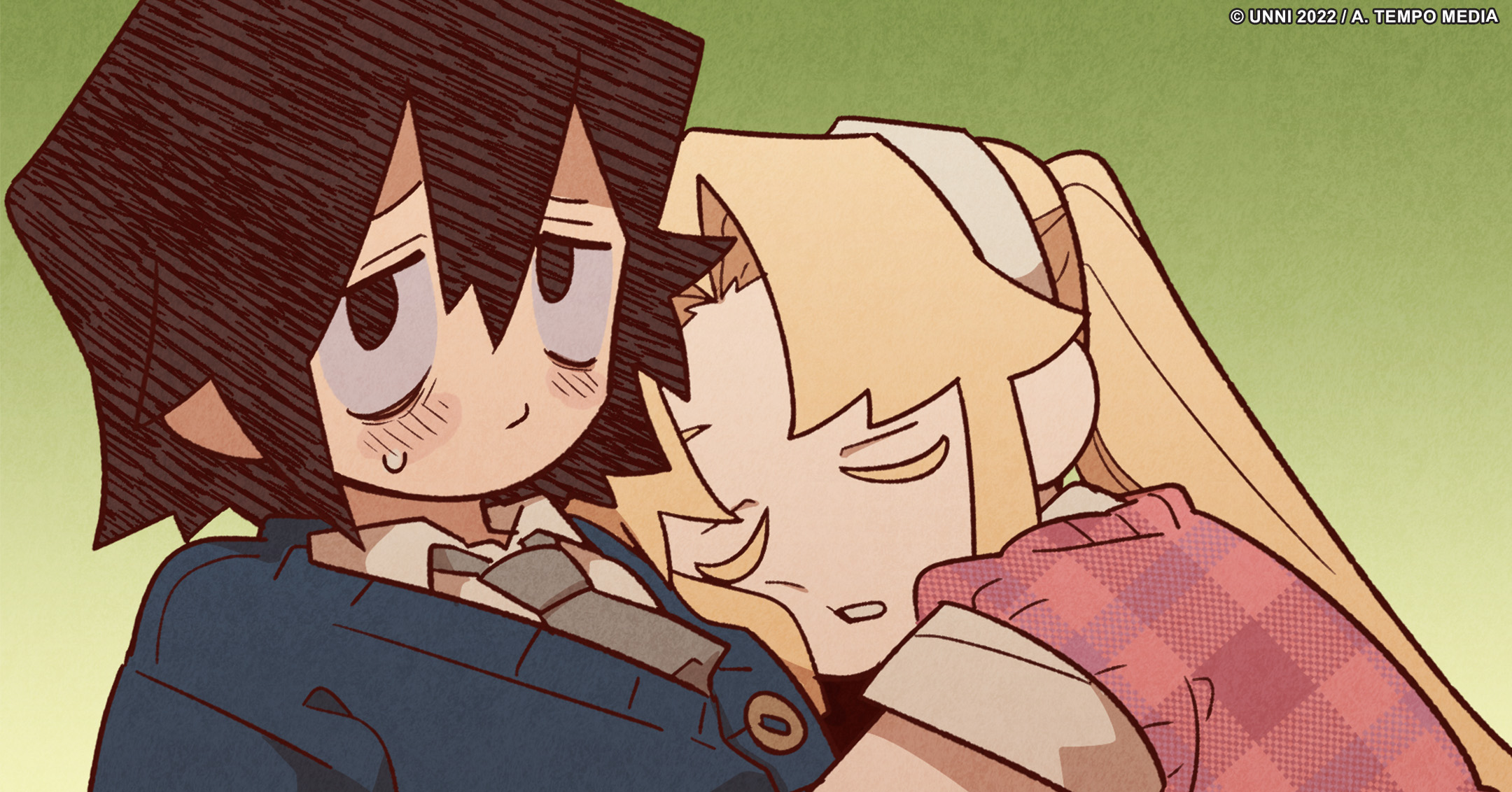
Your debut series, I Love Amy, blends comedy with psychological drama and Girls Love (GL) themes. How did you start developing the story? Was it hard to balance the psychological intensity with lighter comedic or romantic moments?
I Love Amy was originally planned as a short story. The first episode was exactly what I envisioned. Later, the publisher commissioned a full-length series in the school life genre, so I added to the plot. It was a story that suddenly came to me one day, so I didn’t really have a plan. The initial setting and the present version are completely identical.
Dark or psychological stories were something I was always interested in, so I didn’t find that aspect too difficult. In fact, it was the romance part that proved to be a challenge. I Love Amy was my first romance-centered work. I had a very hard time with it. Early on in the series, I struggled with the grammar of romance, so many people mistakenly thought it was a story about friendship, not love. So, to show the romantic connection between the two, I added the beach scene in Episode 12. Fortunately, my viewership increased after that episode. I think it was a good choice.
Bibi’s obsessive behavior and Amy’s shy anxiety form the emotional core of the story. What inspired the characters and their emotional depth? How did you develop their contrasting personalities to complement each other? Which character do you relate to the most, if any?
The theme I set for this story was to make the character commonly referred to as a yandere happy. So I pondered over what kind of person Bibi needed, and that person was Amy. Amy supports and accepts Bibi simply because she loves her, no matter how bad Bibi is. This is Bibi belatedly getting the love she never received from her guardians. Bibi may be a bit strange, but she’s strong, and that’s why Amy, who was afraid of love, can love her with peace of mind. After all, Bibi is stronger than cars, her mother, or any other thing Amy is scared of. To other characters, Bibi’s abnormal behavior is a reason why most people are terrified of her, but to Amy, it serves as a refuge from her trauma. In turn, Amy’s social anxiety and inability to mingle with her peers are a source of comfort to Bibi whenever she’s feeling confused. I didn’t want the characters to try to fix each other’s traits. Rather, I wanted them to simply embrace and complement those quirks. Looking at these children from various perspectives, I found myself deeply sympathizing with Linda, who has the role of the observer—they’re a strange bunch, but I can’t bring myself to hate them.
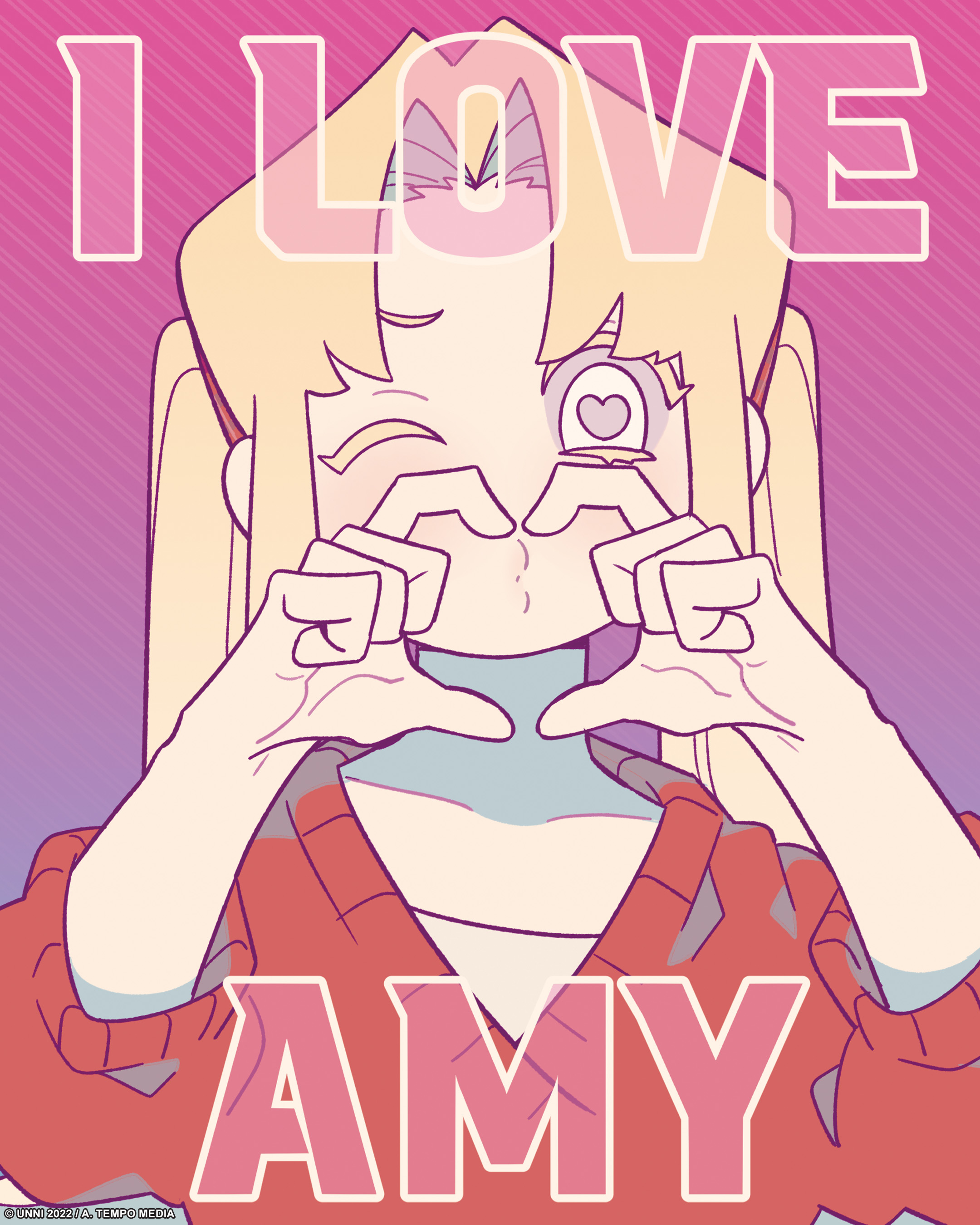
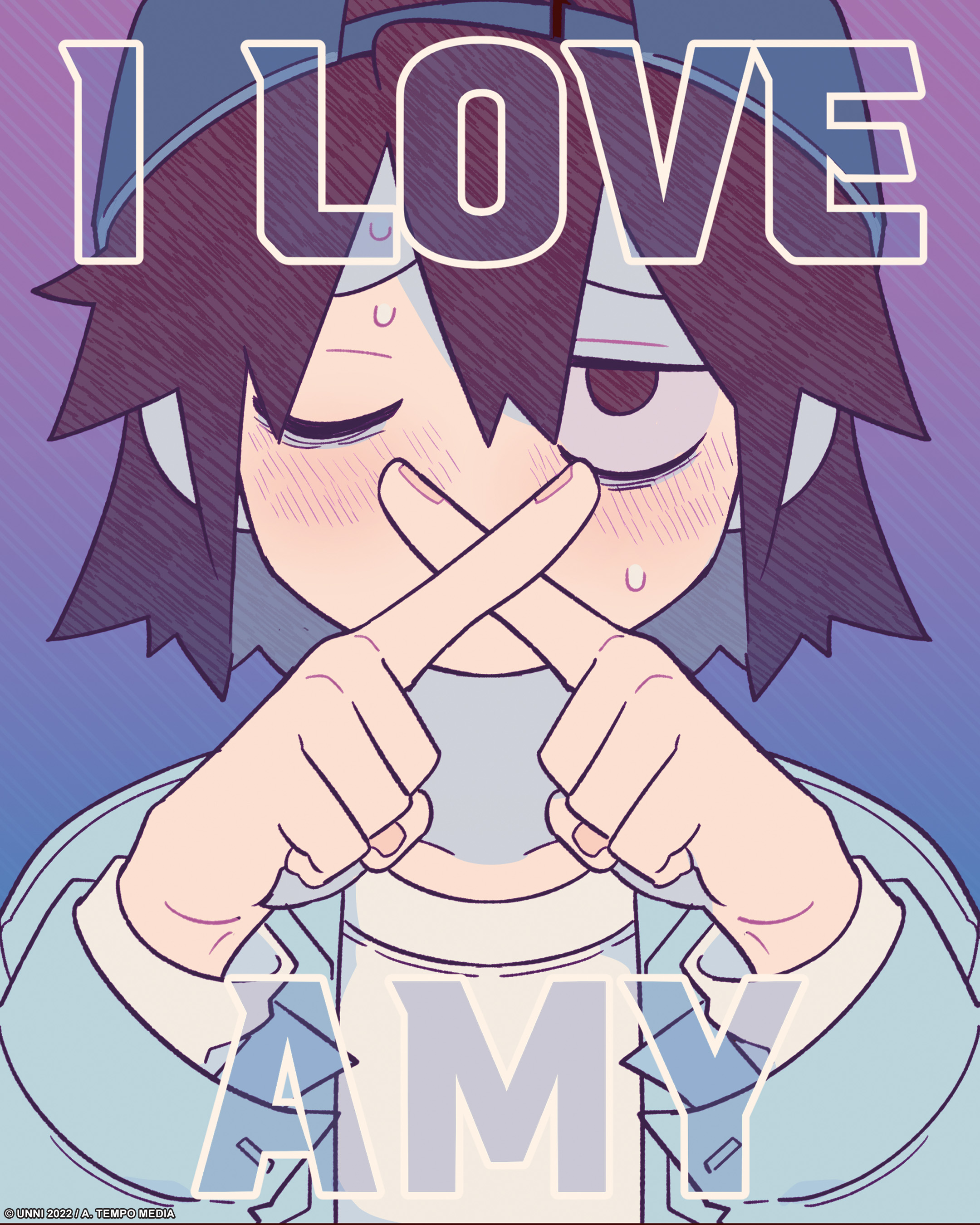
I Love Amy explores themes of obsession, trauma, and emotional growth. Were any of these drawn from your own experiences or observations?
I’d like to say that the work and the author are separate entities, so it has nothing to do with my experiences. However, because it delves into deeply personal stories of family, relationships, and trauma, I couldn’t completely separate them. Perhaps thanks to this, I was able to pour all my heart into creating I Love Amy.
Are there any books or creators who have inspired you? Any GL titles?
Before working on I Love Amy, I wasn’t familiar with the GL genre. To better serve the fans of the genre, I researched Japanese GL manga and queer films. The most influential works for I Love Amy were The Half of It, directed by Alice Wu, and, although not in the queer genre, To All the Boys I’ve Loved Before by Jenny Han.

I Love Amy feels very inspired by the American high school experience and pop culture. Is there a particular reason why you chose to set it in Maine? Did this require some research, and if so, what sources did you take from?
Firstly, I simply love works dealing with American high school and teen life. I love American animation, teen movies, and horror films, so I watch them often. Naturally, I developed a deep fascination with such themes and settings. And I chose Maine because it’s the setting for many of Stephen King’s novels. I definitely want to visit there someday.
Secondly, because same-sex marriage is legal in the US, it allowed for the ending in which Amy and Bibi are reunited despite their traumatic family lives and start a family of their own. No one thinks it strange when Amy and Bibi get married; everyone celebrates their union. If it had been set in Korea, which I’m familiar with, this ending could not have been possible.
With English digital serialization via Tappytoon and the upcoming print release by Ize Press, how do these international developments impact you? What’s been the most surprising or touching fan response you’ve received?
I was surprised that my first work would receive this much love. I was thrilled when the webcomic began serialization on Tappytoon, and the fact that physical books are being published in English still feels unreal. Even now, international fans contact me through my social media accounts. They send me their thoughts in Korean about the story, photos of I Love Amy cosplay, and fan art. I’m very happy to be receiving so much love, even though the series was completed only recently.
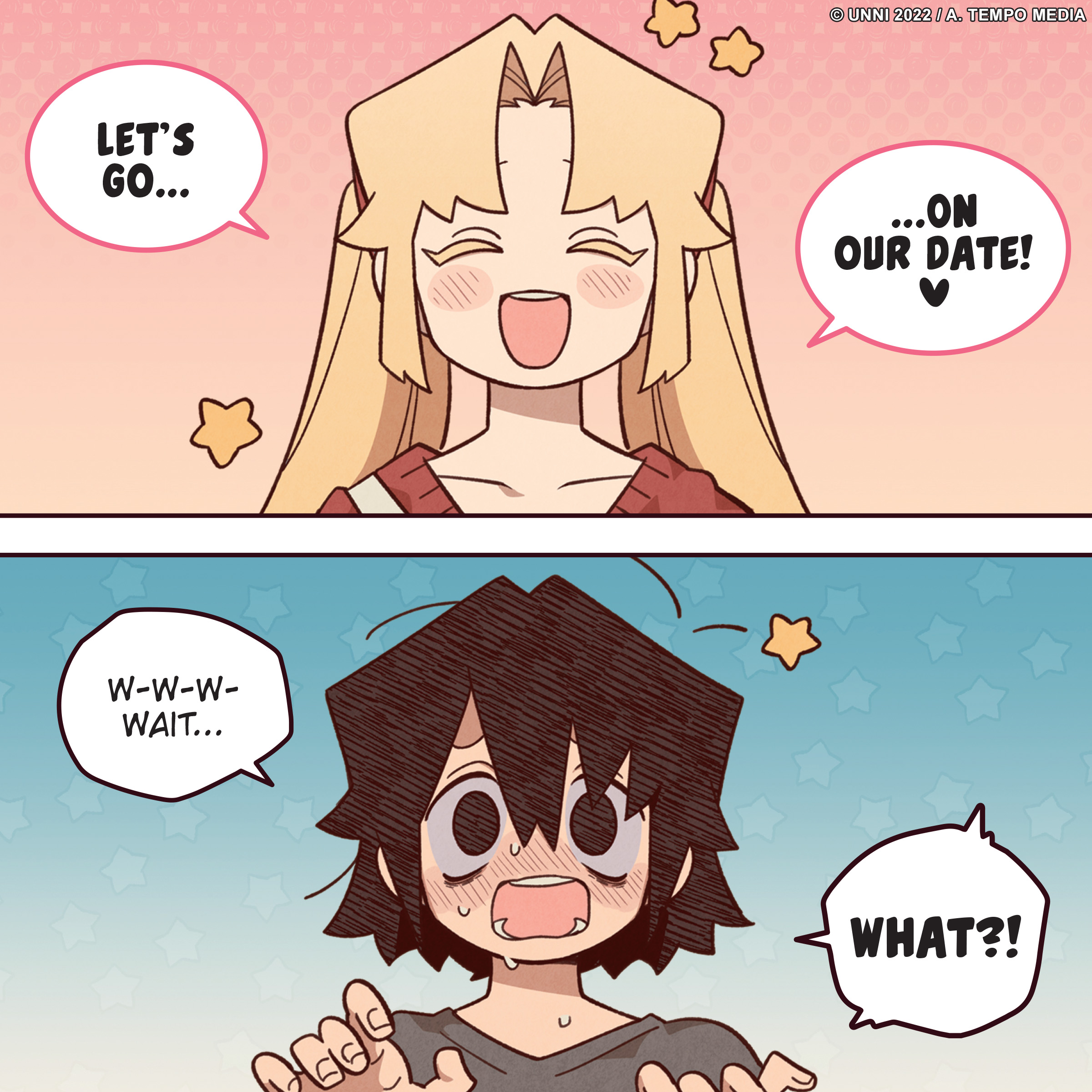
What themes or genres are you interested in exploring in future works?
The genres I want to write are endless. Regardless of the genre, I want to tell stories that can heal people’s hearts.
Viewing your personal art online, you clearly have excellent taste in anime, including Madoka Magica, Panty & Stocking, Death Note, Shugo Chara!, etc. What are some of your favorite anime series?
Actually, I love family animation. Crayon Shin-chan, Atashin’chi, and Courage the Cowardly Dog were all shows I was obsessed with as a child and still am today. The characters are lovable, but there’s a strange sense of realism or creepiness, and despite all that, the familial love is unwavering. That’s what I love about such works. These days, I’m obsessed with Chiikawa.
Do you have a message for fans of I Love Amy?
To the fans who love I Love Amy:
Thanks to you, I’ve had so many experiences. It might sound a little silly, but I actually believe that somewhere in Maine, the characters are continuing their lives after the story of I Love Amy has ended—Bibi and Amy enjoying peaceful days with their children, Camilla living every day to the fullest, and Peter just being Peter. I hope that Bibi and Amy will one day come across the I Love Amy volumes in a bookstore and laugh, saying, “This is just like our story!” If you happen to run into them, please say hello for me.
Thank you, and I love you always.
. . .
Ize Press is proud to be publishing I Love Amy in print, making it the first Girls Love title for the imprint. Featuring a deceptively cute aesthetic, contrasting against the psychologically intense narrative, I Love Amy will crawl into your brain, redecorate, and stay long after you turn the last page. The dynamic between the delightfully unhinged Bibi and adorably anxious Amy will blow your mind into glittery confetti!
I Love Amy, Vol. 1 releases December 2025, so pre-order your copy to hop on the wild rollercoaster of cuteness and chaos.
Remember, if you'd like to read a free preview of I Love Amy, Vol. 1 (or any of our other titles), just click the 'Look inside' button that shows under the cover image on the book's page.










